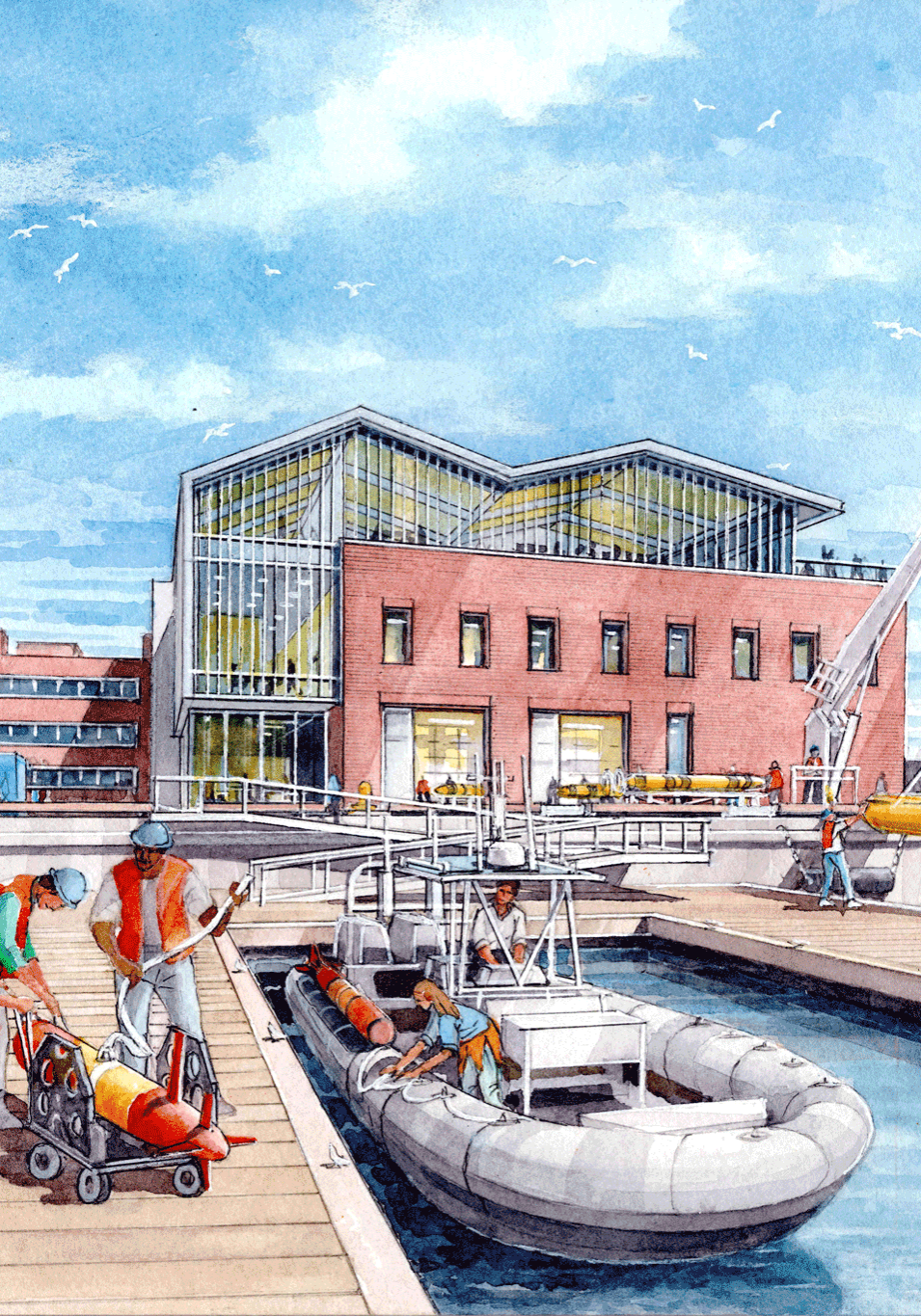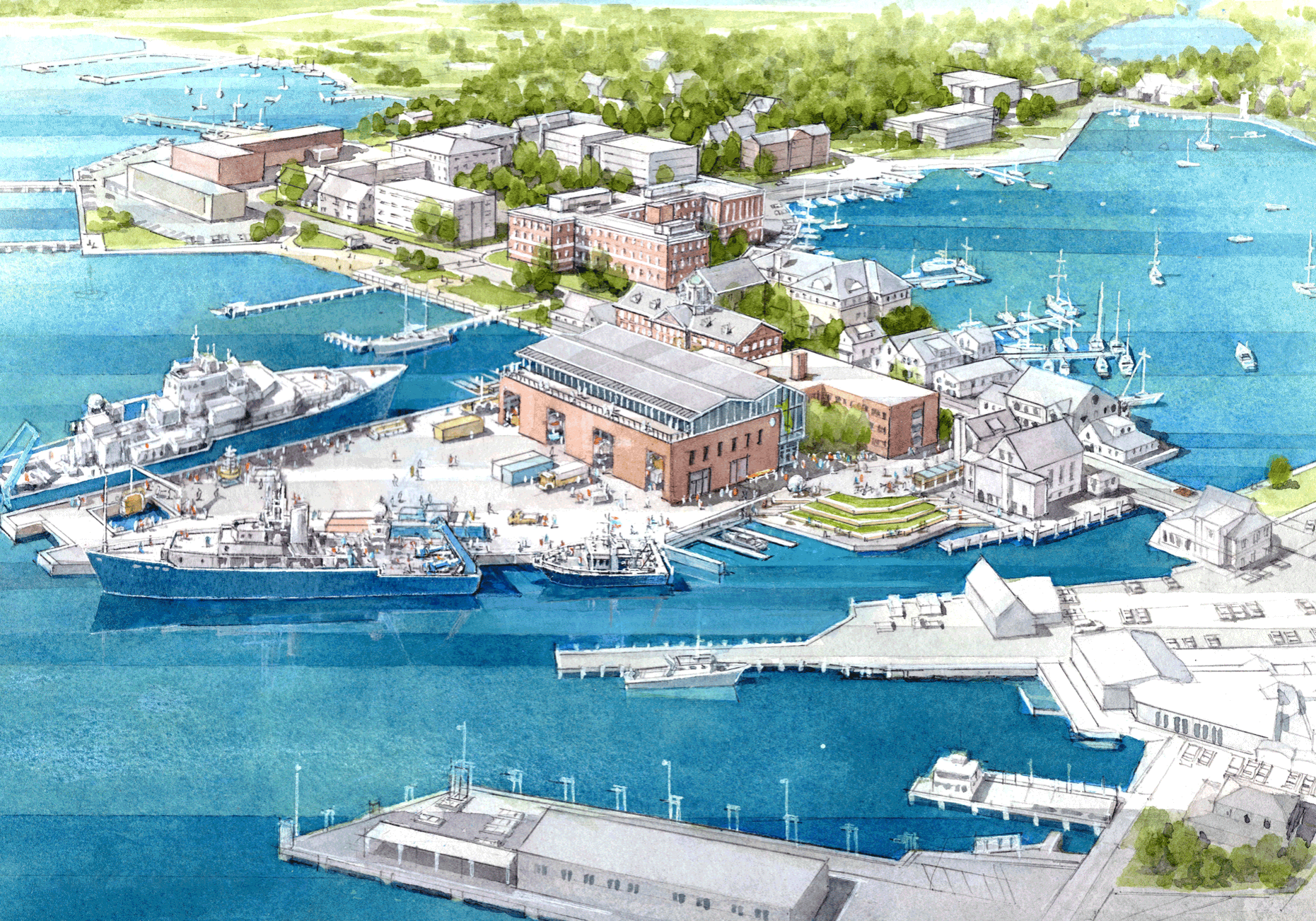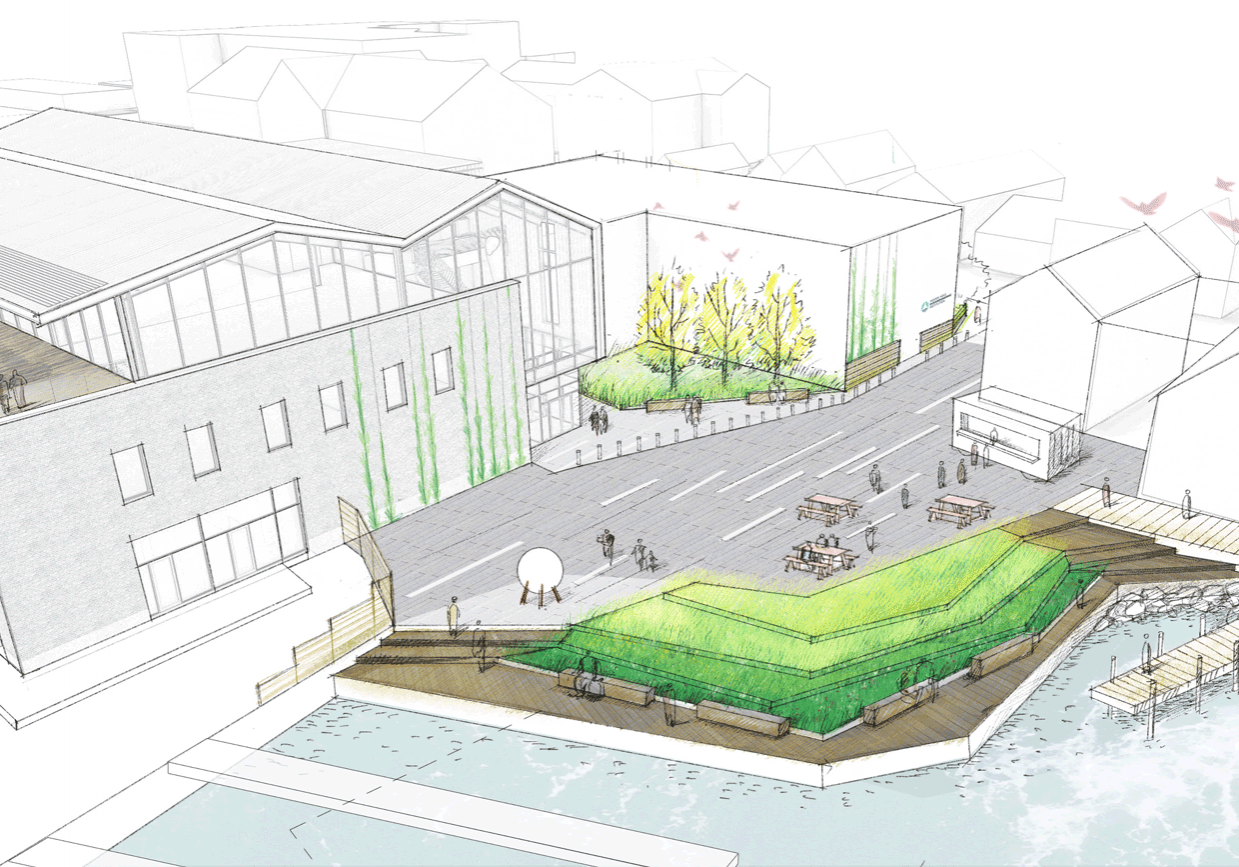
A new robotics port will serve as a launch pad for autonomous underwater vehicles from ships and shore, expanding ocean exploration and data gathering exponentially. (Artist concept rendering @Woods Hole Oceanographic Institution)
CWATER WILL...
- Create a waterfront complex that anticipates and accelerates the next century of ocean research for the global good
- Extend WHOI’s global leadership in oceanography for the next 70 years
- Develop a research ecosystem that fosters experimental innovation, improves access, and sparks national and international collaboration
- Reflect an exemplary, forward-thinking commitment to environmental sustainability and resiliency
- Replace the existing Iselin Dock Structure and Bulkhead that has served the U.S. for more than 50 years
- Modernize existing buildings, high bays, and laboratories
- Accommodate projected 2.5-4 feet of sea
level rise - Meet storm loading design criteria
- Reduce ongoing maintenance
The CWATER project will modernize and enhance WHOI’s existing dock, test wells, ship support, scientific research laboratories, and flexible high bay space.
THE DOCK
- CWATER will modernize and enhance WHOI’s existing dock, test wells, prototyping labs, fabrication shops, scientific research laboratories, and flexible high bay space, adding a new “robotics port” and other facilities to enable the development and in-ocean testing of marine robotics—a core design objective.
- CWATER’s new, controlled test wells will support increasing demand for in-water scientific and engineering verification and validation capacity.
THE BUILDING
- Functional managed spaces designed to flexibly serve a broad range of institutional uses.
- Flex laboratories which serve as points of operation for staff during deployments or research efforts on the waterfront.
- Each space has been developed to adapt to a number of operations without the need for comprehensive reconfiguration
or renovation. - Artificial Intelligence and interactive observation stations for guests to see science in action.
- The facility will also house a new shipboard scientific systems group (SSSG) test lab, ship support, and an expanded scientific diving operation.
“Far and away, the biggest threat to the ocean is ignorance. It’s a lack of understanding that what we put in, what we take out matters—not just to the ocean, but matters to us.” — DR. SYLVIA EARLE, WHOI LIFE TRUSTEE


